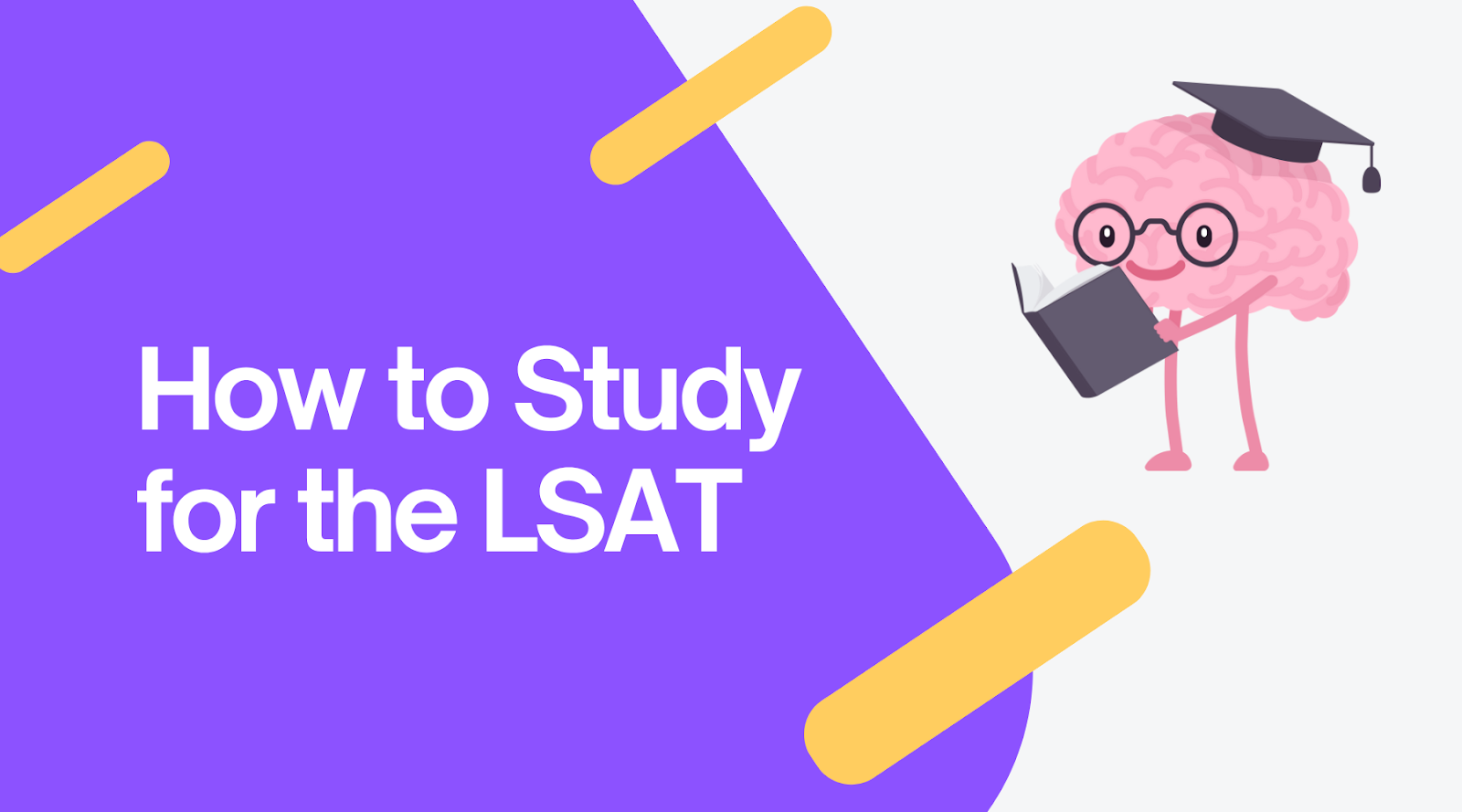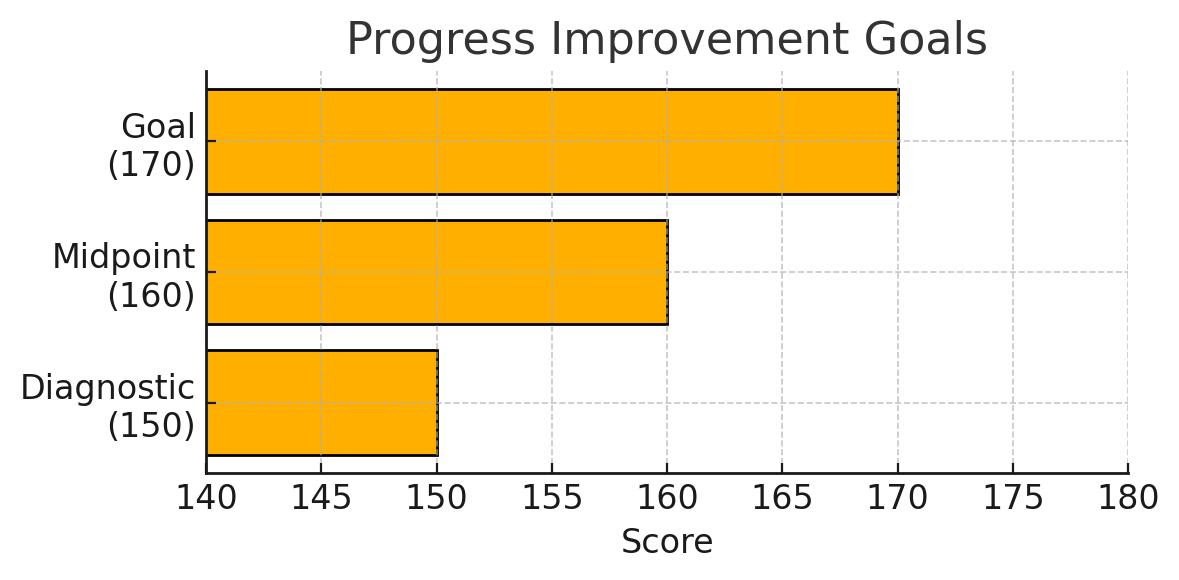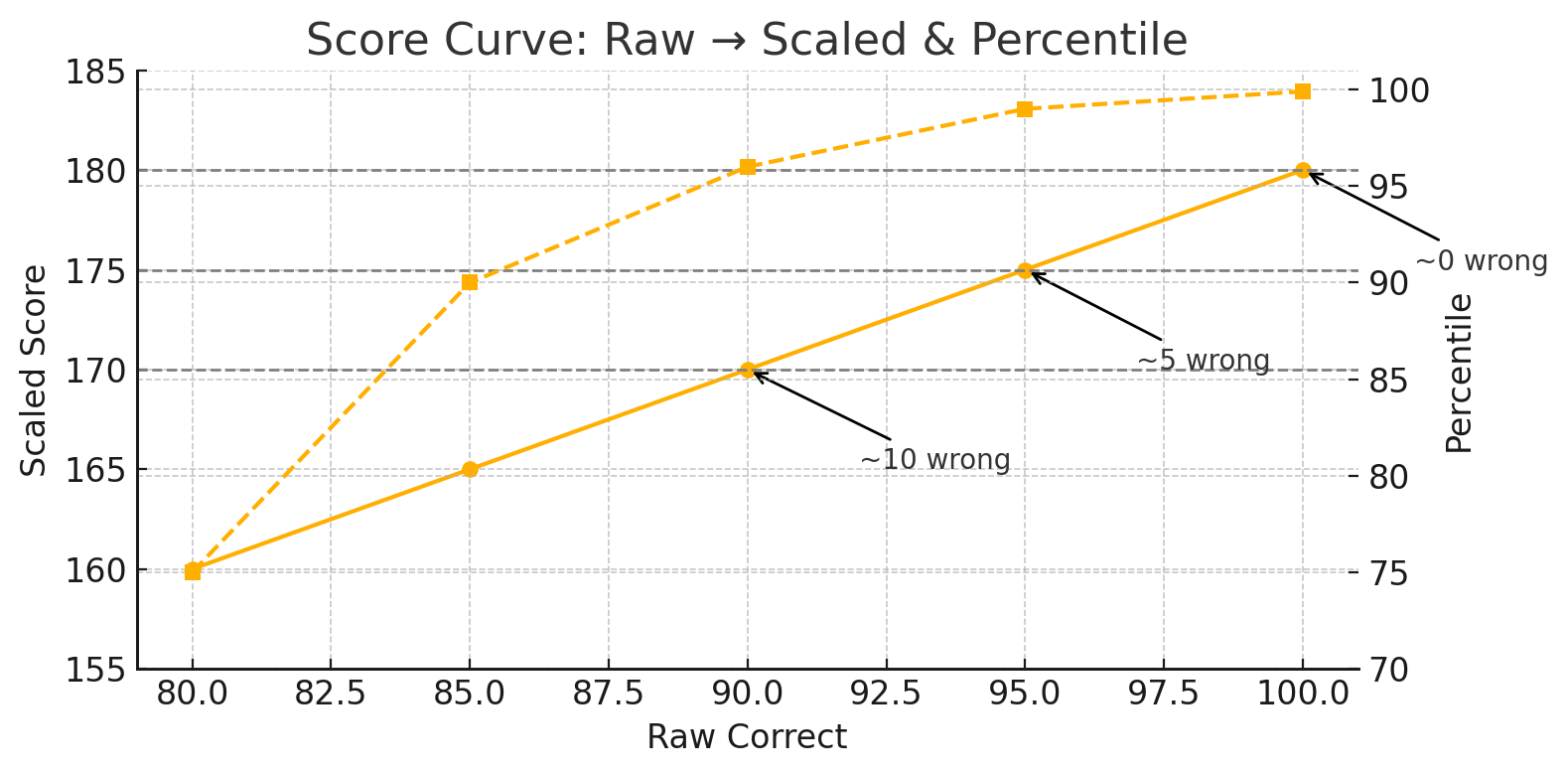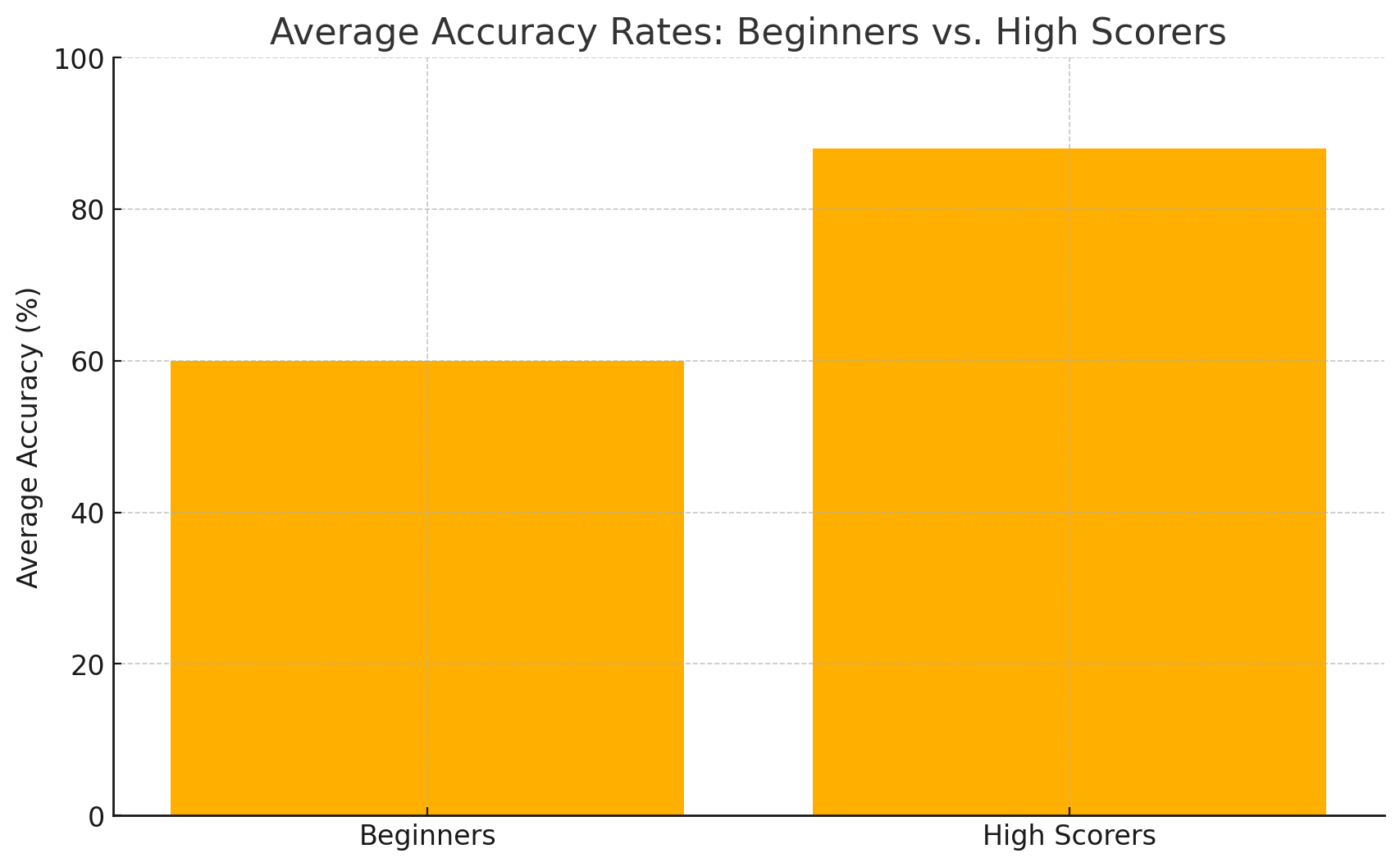
How to Study for the LSAT
Quick Answer: To study effectively for the LSAT, craft a tailored strategy that mirrors the test-maker's mindset: start with a diagnostic test, identify your weakest section, and use real LSAT questions to drill with purpose. Instead of just practicing more, practice smarter—analyze every wrong answer until you can predict the trap. Focus on quality over quantity, train under strict time limits, and simulate test-day conditions weekly. This approach builds not just accuracy, but endurance and adaptability—exactly what top scorers rely on to hit 170+.
How to Study for the LSAT in 2025?
TL;DR:
The best way to study for the LSAT in 2025 is to build a customized study plan based on diagnostic performance, focus on mastering the logic behind each section, and consistently practice under timed conditions using official LSAT questions. Use a combination of active recall, blind review, and spaced repetition to train your reasoning—not just your memory.
What is the LSAT and Why Strategy Beats IQ
The LSAT (Law School Admission Test) is not a knowledge-based exam. It’s a skills-based test designed to measure your ability to think critically, analyze arguments, draw logical conclusions, and process dense text quickly.
Format Overview:
- Logical Reasoning (LR) – 2 sections
- Analytical Reasoning (Logic Games) – 1 section
- Reading Comprehension (RC) – 1 section
- Unscored Experimental + Writing Sample
Each scored section is 35 minutes long. To excel, it's not about having the highest IQ—it’s about building the sharpest test-taking strategies.
◆“The LSAT doesn’t test what you know. It tests how you think.”
High-Yield Strategies for Each Section
Logical Reasoning (LR): Use Pattern Recognition Drills
Logical Reasoning questions make up roughly half the test. The key here is to recognize argument patterns and logical fallacies.
Best strategies:
- Drill question types (strengthen, weaken, flaw, inference)
- Build a catalog of logical structures
- Use flashcards for question stems and common fallacies
Analytical Reasoning (Logic Games): Diagram Like a Pro
This section is the most learnable. Mastering diagramming techniques and conditional logic pays off exponentially.
Best strategies:
- Learn and drill game types (grouping, sequencing, hybrid)
- Practice game board templates
- Use the “setup → inferences → scenarios” method
Reading Comprehension (RC): Read With a Mission
RC tests endurance and focus. The challenge isn’t just understanding—it’s remembering and extracting key ideas.
Best strategies:
- Use active reading and annotation
- Focus on the author’s tone and main point
- Create quick mental summaries after each paragraph
Proven Study Methodologies That Work in 2025
- Spaced Repetition: Retain logical concepts and question types long-term by revisiting them at increasing intervals.
- Active Recall: Quiz yourself before reviewing answers. This sharpens memory and boosts focus.
- Timed Section Practice: Mimic real exam conditions to train pacing, stamina, and adaptability.
- Blind Review: After completing a section, go back and rework the questions without looking at answers. This helps pinpoint your true reasoning weaknesses.
LSAT Section Breakdown & Time Allocation
- Logical Reasoning: 70 questions | 2 sections | 50% of total score
- Analytical Reasoning: 23 questions | 1 section | 25% of total score
- Reading Comprehension: 27 questions | 1 section | 25% of total score
Ideal Study Time Allocation:
- Logical Reasoning: 40%
- Logic Games: 30%
- Reading Comprehension: 30%
Top 5 Free and Paid LSAT Resources (2025)
| Resource | Type | Best For |
|---|---|---|
| Khan Academy | Free | Beginners, foundational skill-building |
| 7Sage | Paid (Free Trial) | Logic games, blind review, video explanations |
| LSAT Demon | Paid | AI-based personalized drilling, live tutoring |
| LawHub by LSAC | Free + Paid | Real practice tests and official explanations |
| Reddit r/LSAT | Free | Community strategies, motivation, real-life stories |
Also Visit: How to pass the TEAS test without studying?
How Long Does It Take to Prepare for the LSAT? [Study Timelines Included]
TL;DR:
Most LSAT takers need 3 to 6 months of consistent study (10–20 hours per week) to see a significant score improvement. For elite scores (170+), a 6–9 month plan with full-length practice tests, blind review, and section mastery is ideal. The key isn’t just time—it’s how effectively you use it.

How Many Months Does LSAT Prep Really Take?
There’s no universal timeline because every test-taker is starting from a different point. However, some general timelines have emerged based on LSAT score data and prep trends.
| Goal Score | Study Duration | Weekly Commitment |
|---|---|---|
| 150–155 | 2–3 months | 8–12 hours |
| 160–165 | 3–5 months | 12–15 hours |
| 170+ | 6–9 months | 15–25 hours |
Personalized Timelines Based on Your Lifestyle
1. Full-Time Student:
- Best to prep over summer or light semesters
- Focus: Daily timed drills, 2 full tests/month
- Duration: 4–6 months
2. Working Professional:
- Ideal: 1–2 hours daily + longer weekend blocks
- Focus: Review-heavy schedule with targeted drills
- Duration: 6–9 months
3. Full-Time Prepper (Gap Year):
- Best-case scenario for immersive prep
- Schedule: Practice tests every 5 days, full review
- Duration: 3–5 months
◆“You don’t need more time. You need more consistency.”
When Should I Take a Diagnostic Test?
Start your prep with a cold diagnostic test using an official LSAT. This helps determine your baseline and gives you a realistic idea of how much time you’ll need.
- If you're scoring <150, allow at least 6 months
- If you're scoring 150–160, aim for 4–5 months
- If you're already 160+, 2–3 months of refinement may be enough

When Should I Register for the LSAT?
The LSAT is administered multiple times a year (monthly in many regions). Plan to take it at least 3–4 months after starting prep—but register early to secure your preferred date and location.
Upcoming LSAT Dates (2025):
- January, March, June, August, October, November
- Offered both digitally at home and in test centers (depending on your country)
LSAT Prep Timelines at a Glance
| Month | Goal | Key Activities |
|---|---|---|
| 1 | Diagnostic + Weakness ID | Take full test, analyze each section |
| 2 | Skill-Building | Drill question types, learn logic game setups |
| 3 | Mixed Practice | Timed sections + weekly review sessions |
| 4 | Simulation + Mastery | Full tests under timed conditions |
| 5 | Review + Score Tracking | Focus on accuracy, patterns, and endurance |
| 6+ | Final Push | Revisit weak spots, retake if needed |
Apps and Tools to Track Your LSAT Study Hours
Top Tools for LSAT Time Management:
- Toggl – Track hours per section or skill
- Notion / Evernote – Customizable prep dashboards
- Google Sheets – Score tracking and test analytics
- Pomofocus.io – Pomodoro timer for focused study
- Anki – Flashcard app for logic rules and question types
How to Score 170+ on the LSAT: Real Strategies That Work
TL;DR:
Scoring 170+ on the LSAT requires more than hard work—it takes strategic, deliberate practice. Focus on mastering fundamentals, identifying patterns in wrong answers, and simulating real test conditions regularly. A high score is not about perfection, but consistency under pressure.

Is It Really That Hard to Get a 170+ on the LSAT?
A 170+ places you in the 97th percentile or higher, a score achieved by only about 3% of test-takers. While it’s difficult, it’s entirely attainable—even without a "naturally logical mind"—if you train with the right mindset.
Key shifts in thinking:
- Don’t study harder—study more diagnostically
- Treat LSAT questions as patterns, not puzzles
- Focus more on reviewing mistakes than taking more tests
The Mindset and Process of a 170+ Scorer
High scorers don’t just do more problems—they study differently. Here's how they work:
They track every wrong answer.
- Categorize errors: misunderstanding, misreading, time pressure, or logic gap
- Use spreadsheets or apps to identify recurring issues
They review smarter, not just longer.
- During blind review, they ask: Why was this answer tempting? Why was it wrong?
- They learn from every trap the LSAT sets
They master the pacing curve.
- Easy → Medium → Hard: Top scorers don’t spend equal time on every question
- They know which Qs to flag and come back to
◆“You only need to get about 89 out of 101 questions right to get a 170.”

Section-by-Section Strategies for 170+ Scores
Logical Reasoning (LR)
Top tactics:
- Drill one question type daily (e.g., flaw questions on Monday)
- Prephrase answers before reading options
- Study argument structure deeply—start with stimulus, not question stem
Common blind spots to fix:
- Overthinking strengthen/weaken questions
- Confusing correlation with causation
Analytical Reasoning (Logic Games)
Top tactics:
- Master “if-then” conditional reasoning and contrapositives
- Memorize standard game board templates for sequencing, grouping, etc.
- Create and use game splits to avoid wasting time in deductions
Game-changer tip:
Redo the same game 3 times over 3 days. Repetition creates internal automation.
Reading Comprehension (RC)
Top tactics:
- Focus on author tone and passage structure
- Practice active annotation—circle attitudes, underline transitions
- Learn to recognize the main point vs supporting detail distinction
High-scorer secret:
They read like a lawyer, not a literature student—always scanning for purpose, argument, and shifts in tone.

Performance Plateaus: How to Break Through
Every serious test-taker hits a plateau around 160–165. To break through:
Stop doing more and start analyzing deeper
- Redo full sections with no timer to fully understand logic
- Switch to “untimed accuracy” practice, then reintroduce time later
- Take a full test every 7–10 days under real conditions
◆“170+ isn’t about scoring higher—it’s about making fewer of the same mistakes.”
Top 3 Mistakes That Keep People Stuck at 160
Too many untargeted practice tests
- You need depth, not volume. Every question should teach you something.
Ignoring the review phase
- Practice without review = memorizing bad habits.
Not simulating test-day conditions
- Skip the digital watch. Practice like it's test day: same tools, same breaks, same stress.
Score Curve from 150 to 180 (Suggested Visual)
| Raw Score | Scaled Score | Percentile |
|---|---|---|
| 55 | 150 | 44th |
| 70 | 160 | 76th |
| 82 | 170 | 97th |
| 90–92 | 175 | 99th |
| 99–101 | 180 | 99.9th |
Recommended Tools for 170+ Strategy
- 7Sage Logic Game Explanations – for splitting and board creation
- LSAT Demon Premium – personalized drilling with AI
- Cambridge LSAT Q-Type Tracker – organize and review question categories
- Reddit r/LSAT “170+ Club” Threads – real strategies from scorers
How Bad Is a 135 or 147 on the LSAT? Can You Still Recover?
TL;DR:
A 135–147 LSAT score falls below the national median (usually around 150). While it limits admission to most tier-1 law schools, you can recover with targeted prep, strategic retakes, and focused skill-building over the next 3–6 months.
Understanding the LSAT Scoring Curve
The LSAT is scored on a 120–180 scale. Your raw score (number of questions you answer correctly) maps onto this scale according to a curve that varies slightly by test form.
| Raw Score | Scaled Score | Approx. Percentile | Admission Tier |
|---|---|---|---|
| 40–50 | 135–147 | 7th–25th | Open-admissions only |
| 51–61 | 148–156 | 26th–60th | Regional/state schools |
| 62–74 | 157–166 | 61st–90th | Many top-100 schools |
| 75–85 | 167–174 | 91st–98th | Top-20 schools |
| 86–101 | 175–180 | 99th+ | Elite law programs |
A score in the 135–147 range places you roughly in the 7th–25th percentile, which is below the median for most ABA-accredited schools.
Why Low Scores Happen—and How to Fix Them
- Underdeveloped Foundational Skills
- Poor Time Management
- Inadequate Review Process
◆“Your first LSAT score doesn’t define you—your prep does.”
A 30-Point Recovery Plan (Next 90 Days
| Week | Focus Area | Key Actions |
|---|---|---|
| 1–2 | Diagnostic & Fundamentals | Take a full official LSAT → Identify weakest section(s) |
| 3–4 | Logical Reasoning Foundations | Drill one question type per day → Use flashcards & charts |
| 5–6 | Analytical Reasoning Basics | Master diagram templates → Solve 5 games per week |
| 7–8 | Reading Comprehension Techniques | Active annotation drills → Summarize 3 passages/week |
| 9–10 | Timed Section Practice | One timed section daily → Blind review each evening |
| 11–12 | Full-Length Tests & Review | Two full tests → Deep error-log analysis |

When and How to Retake the LSAT
- Ideal Retake Timing: Schedule your next test 3–4 months after beginning intensive prep.
- Multiple Attempts: Schools typically consider your highest score or highest section-level scores. A strong retake can outweigh a low first attempt.
- Application Strategy: If you must apply between tests, submit with a low score but note “Scheduled retake in [Month Year]” and update later.
Alternative Paths if Scores Don’t Improve
- Conditional Admission Programs: Some schools offer provisional entry contingent on a summer-bridge LSAT prep program.
- Master’s-to-JD Tracks: Certain universities admit candidates to a master’s program with guaranteed JD candidacy upon meeting GPA/LSAT thresholds.
- Non-JD Legal Careers: Consider paralegal certificates or master’s in legal studies if JD remains out of reach.
Suggested Visual: “LSAT Score vs. Law School Tiers”
- Tier 1 (135–147): Regional/state schools, open-admit programs
- Tier 2 (148–156): Many top-100 schools
- Tier 3 (157–166): Top-50 programs
- Tier 4 (167–180): Top-20 & elite law schools
Tip Box: “Is Retaking the LSAT Worth It? Here’s When It Pays Off”
- You have at least 3 months of focused prep left.
- Your error log shows specific, fixable weaknesses.
- You’re scoring within 5–7 points of your target in practice.
- You can commit to timed, disciplined study without major schedule conflicts.
Frequently Asked Questions
What is the best way to study for the LSAT?
The best way to study for the LSAT is to start with a diagnostic test, then build a personalized study plan targeting your weakest areas. Use official LSAT practice questions, incorporate blind review, and follow proven strategies like active recall and timed section practice. Focus on understanding patterns—not just finding correct answers.
How long does it take to prepare for the LSAT?
Most students need 3–6 months of consistent prep, studying around 10–20 hours per week. For a 170+ score, a 6–9 month plan with rigorous timed practice and full-length tests is recommended.
How hard is it to get 170 on LSAT?
Scoring a 170 is challenging—it places you in the top 3% of test-takers. However, it's achievable with deep understanding of logic, strong time management, and a disciplined review process that goes beyond memorization.
Will a 180 LSAT get you in anywhere?
A 180 is the highest possible LSAT score and significantly boosts your chances at top law schools, but it doesn’t guarantee admission. Schools still consider GPA, personal statements, letters of recommendation, and other holistic factors.
What was Obama's LSAT score?
Barack Obama’s LSAT score has never been publicly released. However, his acceptance to Harvard Law School suggests it was likely very competitive.
What LSAT score do I need for Harvard?
To be competitive for Harvard Law School, aim for an LSAT score between 173–175+. Most admitted students also have a high GPA and strong application materials.
Is a 135 on the LSAT bad?
A 135 is below the national average but entirely recoverable through targeted prep and a disciplined retake plan.
What was Elle Woods’ LSAT score?
In Legally Blonde, Elle Woods famously scored a 179 on the LSAT—a fictional example of elite performance.
How bad is a 147 LSAT score?
A 147 falls below the median for most top 100 law schools, but with focused improvement and a retake it
